Feb 21, 2018
By Erik Olsen
Today we are talking about catching the abundance raining down from the sky! Where I live we get 3 to 4 months of rain per year and a long 8-9-month dry spell. During the dry time of year water becomes scarce and here in California drought has been prevalent for years. This is why capturing the rain from the roof of houses, barns and other structures can be an incredible way to catch in store some of the resource of the rainy season’s abundance.
In this video, I’ll take you through my home rainwater catchment right after it was set up. We will follow the path of water from where it gets collected off the roof, to the conveyance system, to a transfer tank, and finally pumped to a 10,000-gallon storage system high on the landscape. I can’t tell you how good it feels to have that 10,000 gallons of water security at the height of summer.
Catch your rain!
Erik
https://erikohlsen.com
Feb 1, 2018
by Stephanie Oelsligle Jordan, Sustainable Solano, Local Food System Manager
This was my first EcoFarm conference. When initially sifting through the options for lectures and discussions about a month ago, I noticed the obvious: “how-to” workshops on various technicalities of farming, and peer discussions on what works (or doesn’t) in agriculture today, new inventions, pest management, etc. What I wasn’t expecting were some amazing and relevant discussions and speeches addressing how today’s farmers must intersect with larger social/world issues including hunger, social justice in food systems, honoring Native American lands, and climate change, just to name a few.
But there was another underlying, somewhat spiritual theme that seemed to arise from the workshops and discussions that I attended: our relationship to – and responsibility for – a given place, whether we farm it or not. It was this “sense of place” that I found myself thinking about the most, and how that idea might serve my work with Sustainable Solano’s Local Food initiatives.
I am not an expert in Permaculture or Biodynamic farming (I’m a chef!) but I gathered that this “sense of place” is vitally important in both methods of farming. In a talk titled “Nature Connection, Permaculture & Ecological Responsibility,” Will Scott of Sonoma’s Weaving Earth Center for Relational Education took us on a journey both inside our minds and hearts, and then – literally – out into the woods. His initial argument was that “our sense of awareness of our landscape and surroundings has been limited by the industrialized world….The mind has been colonized, and the story of separation has been ingrained….Modern experience has atrophied our ‘whole being sense.’” But all is not lost!
Through “Nature Connection,” we can regain our sense of connection. He made an interesting point (often forgotten, I might add) that our connection to the natural world just IS. We can’t deepen it. However, we can increase our capacity to interact with it and relate to it. “When love for a place happens,” he stated, “empathy is embodied and behavior can change to ensure the place is taken care of….If we want to start designing or thinking ‘whole system’, then we need to use our whole system too: heart and mind, and not just our intelligence.” He had a quote from someone else, which pretty much summed it up: “Lose your mind and come back to your senses!” So we did. He led us out to the woods, and for about 10 minutes we did nothing but let nature interact with our 5 senses, in what he called a “Sit Spot.”
Another workshop that touched upon this “sense of place” was a discussion group titled “Biodynamic Farming and Gardening for the Future”. Seasoned biodynamic farmers and newcomers to the method were sitting in a circle, and I was struck by one farmer who had previously farmed in Wisconsin. He had lately moved to California, and just wasn’t connecting to the land like he had in the Midwest. (This is a problem, by the way, if you want to be a biodynamic farmer!) As I learned about the importance of the farmer’s interaction with not only the land, but also the solar system, weather patterns, creatures big and small, and everything else in his/her “place,” I began to wonder about the rest of us. Is there a way to connect non-farmers to the land/place through the food?
This question also came up for me at a couple of workshops on Community Supported Agriculture (CSA) programs. As you’d guess, the CSA discussions were largely about how to acquire and retain subscriptions. After addressing the logistical issues (marketing, surveys, packaging, software, etc.), the group concluded that 1) education about CSAs was important and 2) people want a connection to local farmers. Here’s that connection theme again!
The final talk I attended was titled “The Farmer and the Chef: Utilizing Abundance” (Finally! Something I understand!) and featured exactly that: Farmer Jeff Dawson of The Farm in Woodside, CA and Chef Stuart Brioza of State Bird Provisions and The Progress restaurants in San Francisco. Here they were, presenting their collaboration, along with all the spreadsheets and systems that have made it work over the past 5 years. This is admittedly a very specialized relationship, in which the majority of us will not experience. However, Chef Brioza made a good point, which is not unlike the CSA programs, and has this idea of connection at heart: “You’re not just partnering with a farm. You’re partnering with abundance, and the harvest….We are telling a story about the farm, on the plate.”
I’m sure I left EcoFarm with more questions than answers. (How can the larger population become involved in that “sense of place” in order to appreciate the value of the farmer’s work? How can this “sense of place” influence our local farmers to take better care of their soil? How are we ALL responsible for this place, whether we farm it or not?) And I think most of the attendees may have left with more questions as well. However, I sensed an energy among all of us that in the midst of all the questions, we all had an unwritten and unspoken commitment to one another to move forward. Everyone seemed courageous….ready to make connections….and do what it takes to care for their respective places on the planet.
Made possible by Solano Public Health in partnership with the Yocha Dehe Wintun Nation
Jan 3, 2018

As part of the Peaceful World Foundation’s attempt to bring meaningful, inspiring conversations about topics that matter to the people, Peaceful World Conversations breakfast conversation sessions provide a unique communication style platform. These engaging gatherings aim to build awareness on various topics important to people’s lives through meaningful discussions that contribute to the development of ourselves and our communities. Peaceful World Conversations offer an opportunity to grow in self-knowledge, ask meaningful questions and co-create new possibilities.
This season, Sustainable Solano along with a network of other organizations who work with the land, had the opportunity to participate as co-host of a breakfast conversation event at Café X in San Francisco to discuss our past and current relationship with the planet and opportunities to deepen our connection with the earth to live in harmony with its soils and waters.
Plant medicine, eating food of our own cultivation, and re-discovering our role in the management of this planet were topics discussed by all who attended. Contrasting city life verses life closer to nature drew many differing views on the benefits of each live condition and finding balance in the tranquility that forest life brings and the order and systematic abundance provided by city life.
Sustainable Solano board member, Marlen Otten talked about the impact of food forest installation projects on building community and establishing a true connection with the earth by getting your hands dirty extending a social connection to the people engaged in such projects.
Members of the Peaceful World Foundation leadership team: Heidi Majano (Program Director), Helene Szabados (Program Coordinator) and David Whitridge (Board Member), spoke about local food systems and our growing disconnect from its production and cultivation. People shared their observations on how large quantities of processed foods having decreased a general appreciation for nature and our food sources.
After acknowledging the outstanding issues, conversations led into a more solution-based approach when the table was asked to provide feedback on ways one could begin connecting with the Earth right now. Several opportunities surfaced through these discussions and attendees from various cultural backgrounds, experience with the land and knowledge chimed in with stories about how their ancestors honored the earth and the food produced in its soils. Heritage Gardens, where traditional plants from varying ancestral backgrounds are cultivated and cared for by methods used from generations prior, was an inspirational topic of discussion and was embraced as an opportunity to reconnect with culture and nature.
The conversation concluded with some takeaway ideas for beginning to connect with the Earth.
- Joining a community garden to build strong relationships with your community
- Educating the youth of agricultural practices
- Walking a garden
- Recognizing our role in the cultivation of the planet is the start to a sustainable future
- Finding our ancestral connections to the earth
Nov 1, 2017
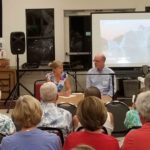
By Stephanie Oeslgigie Jordan, Project Manager, Chef
Can a community decide how it will access food for its members? Is there democratic participation in our food system? What mindsets frame the future of our local food systems? These questions and more kicked off a fascinating lecture-discussion led by Dr. Gail Feenstra and Dr. David Campbell of UC Davis on October 25. Coordinated by Sustainable Solano, the talk was part of an ongoing program hosted by Heritage Presbyterian Church in Benicia, titled “How to Make the World a Better Place,” which features presentations and learning opportunities for people of all ages in Benicia.
Structured as an interview akin to Terry Gross’ “Fresh Air” program on NPR, Drs. Feenstra and Campbell asked provocative questions to each other, to get at the heart of issues surrounding local food systems. The idea of “Local Food” has grown exponentially in the last couple of decades. Dr. Campbell pointed out that in 1997, he and his research team could find only 100 articles on local food, and in 2011 there were over 2000 articles! (In fact, the USDA LFPP grant that Sustainable Solano was awarded didn’t exist 10 years ago.) So, what is all the fuss about? Communities are becoming increasingly interested in how food will be produced, distributed and sold. Over the years, competitive grants programs began to pop up (i.e. Placer Grown, Solano Grown) along with other programs that help communities start businesses and projects that assist local farmers/growers.
When running a food project, Dr. Feenstra had 3 important tips for success (she called them the “3 Ps”): 1) Partnerships are key, and the more diverse your partnerships, the better; 2) Public Participation is necessary for a solid community base and the development of leaders; and 3) maintaining high Principles & Values will help projects achieve social and environmental justice.
Sounds easy, right? Well….there are some challenges according to Dr. Campbell, when asked about planning future food systems. There are 3 different frames of mind out there, each with a different focus. The first is driven by the question, “How are we going to feed 9 billion people?” This perspective is driven by the idea that we need “more”, and incorporates the latest farming technology to increase volume and production. The second group has an environmental focus, driven by climate change. A local example includes the fact that crops are changing location in California, due to increased heat, drought, and changing weather patterns. (We might add that sustainable vs. unsustainable farming methods would affect this problem as well.) The third group is focused on social justice, asking “Why doesn’t everyone have access to healthy food?” and “Who is really running the elements of our food system?”
Not surprisingly, the solution lies in the need for these 3 frames to work together, instead of compete for attention. But how? Dr. Campbell suggests that local communities have advantages of doing work that integrates these elements. Referencing Daniel Kemmis’ book, Community and the Politics of Place, Dr. Campbell theorizes that it is this common love of place that can serve as a foundation to bring people together and allow communities to better tackle issues and develop their own systems. At the same time, communities must have peripheral vision – they must learn to see what’s around them, and develop diverse partnerships with people who can contribute their own unique experiences. If you are too local, you will fight the symptoms, but not the root cause.
And remember those 2000 articles that now exist on local food systems? All that research has illuminated three challenges, which communities must keep in mind: 1) Economic challenges which dance between paying the farmer enough money (so that he/she can continue farming), yet making food affordable for everyone, 2) Social challenges, addressed by numerous studies showing how middle- and upper-class white people are the only ones who can afford healthy food, and 3) Political challenges which highlight the lack of cooperation between one side of the food movement which wants to make changes within, and the other side which wants to “blow up” the system and start something entirely new.
In spite of all these challenges, Dr. Campbell subscribes to what he calls “hopeful realism.” The talk finished with a video of a UC Davis urban agriculture project, where youth work at a community garden in Oakland. Instead of having the director of the program lead a tour through the garden, UC Davis asked the youth to talk about their experiences and knowledge while the camera rolled. At the end of the video, teens and youth were using words such as “love” and “happy” to describe how they felt about their work in the garden. When diverse groups of participants come together and cooperate to solve issues, everyone has the opportunity to benefit in some way.
About the speakers:
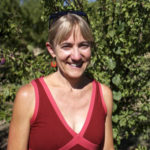 Gail Feenstra is the Deputy Director of the Sustainable Agriculture Research and Education Program (SAREP), a program of the Agricultural Sustainability Institute at UC Davis and the UC Division of Agriculture and Natural Resources (ANR). For Dr. Feenstra’s full biography, click here.
Gail Feenstra is the Deputy Director of the Sustainable Agriculture Research and Education Program (SAREP), a program of the Agricultural Sustainability Institute at UC Davis and the UC Division of Agriculture and Natural Resources (ANR). For Dr. Feenstra’s full biography, click here.
http://asi.ucdavis.edu/people/Feenstra
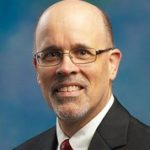 David Campbell, a political scientist, is Associate Dean for social/human sciences in the College of Agricultural and Environmental Sciences at UC Davis. He was appointed Associate Dean in October 2014. For Dr. Campbell’s full biography, click here.
David Campbell, a political scientist, is Associate Dean for social/human sciences in the College of Agricultural and Environmental Sciences at UC Davis. He was appointed Associate Dean in October 2014. For Dr. Campbell’s full biography, click here.
http://www.caes.ucdavis.edu/about/directory/fsd/david-campbell
Oct 4, 2017
Preserving for the Hall Harvest with Chef Lisa
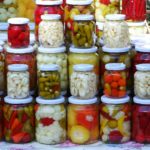
Fall warms up our landscapes and kitchens welcoming warmer flavors and seasonal culinary traditions. Humans have been preserving, fermenting and salting food for centuries and at our September “What’s For Dinner?” free cooking workshop at JFK Library in Vallejo, Chef Lisa led our last cooking workshop of the year and showed us the many health benefits associated with these food preservation processes and how simple getting your probiotics (“good bacteria”). Attendees enjoyed delicious tastings of fruit spread, sauerkraut and other pickled goods.
With a little practice and just a few simple ingredients, you can begin preserving your favorite veggies and fruits while increasing your healthy gut bacteria immediately. Chef Lisa taught how fermented foods in particular, like sauerkraut, are rich in a beneficial bacteria called lactobacilli that reduces overgrowth of pathogens in your digestive tract and relieves a multiple of stomach ailments and supports healthy digestion.
A personal favorite sample creating was a delicious blackberry-vanilla fruit spread that was a delightfully less-sweet alternative to a more gelatinous jam having left out the traditional refined sugar altogether. Without the sugar, these spreads will not gel to a hard-set jam. Surprisingly, the natural sugars of the fruit were just enough to satisfy that sweet tooth. Volunteer teen helpers were ready with tasty samples for the over 20 attendees who seemed to be pleasantly surprised with the results from such easy-to-make, simple recipes.
Although you can preserve and can foods year around, this cooler fall weather allows for less spoilage. You can download all these tasty recipes covered in this workshop by clicking here (Recipes!) .
Oct 2, 2017
Food, environment and human health, local economy and resilient communities
By Elena Karoulina
Executive Director of Sustainable Solano
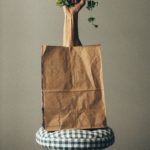
Image from Pixabay
When was the last time you had Solano-grown produce on your dinner table? The most possible answer is ‘never’, unless you grow your own food in your garden or your backyard food forest. It’s a very unusual situation for a Bay Area county that is still largely agrarian, at least in the land use patterns.
Sustainable Solano is embarking on a new project to bring more local food to our communities and to connect our local farmers, chefs, and residents with the gifts of our land and with each other.
At the very end of September we received great news from the United States Department of Agriculture (USDA): our proposal to further our vision by developing a business plan for Solano Community Food Centers was selected for funding! Annually, USDA funds about 14% of grant applications for local food projects, and we are honored to earn support on a federal level.
What is a Community Food Center? It is a hub for local food activities: CSAs deliveries, cooking classes, community education, and large kitchens where chefs and community members can cook wholesome nutritious meals. Larger Community Food Centers can include a food co-op.
Although Solano County produces close to $354 million worth of agricultural products and exports these products to more than 40 countries, only a fraction of that amount remains in the county due to weak distribution system, lack of sales outlets and somewhat low interest in local food. You can hardly find any Solano-grown products in our farmer markets, stores and restaurants. Small farmers struggle to hold on to their land and to connect with local customers.
Where do we buy local food? People who can afford it obtain their local ag products in the markets outside our county: Napa, Sonoma, Berkeley (thus spending local money outside our local communities). Some cities in Solano are blessed with Community Supported Agriculture, but not many people know about this option and take advantage of it. People with low means have to go without local fresh food at all. Solano is a county of commuters, and unfortunately, the only option available for families on a go is fast-food restaurants and convenience stores (you cannot find local food there!).
We pay dearly for this lack of access to local food with our health: Solano County is among the sickest counties in the nation. Obesity, diabetes, heart disease rates are above national average in our home county.
Food, human health, the environment and local economies are all interconnected; by creating a network of city-based Community Food Centers, there is potential to re-envision and re-construct Solano County’s food system so that it works for everyone in the local food supply chain.
Sustainable Solano has partnered with researchers at UC Davis, Solano County Department of Agriculture and Department of Public Health to conduct a feasibility study, develop an effective business plan, and outline implementation for local food businesses that aggregate, process and distribute locally-produced, healthy food products. Our big vision is the environmentally and economically sustainable, equitable local food systems in Solano County.
We are looking for urban and rural farmers, chefs and local food activists interested to implement this vision. We’d love to hear from you with your comments, suggestions, reflections, and offers to help. Please email directly to me at elena@sustainablesolano.org
Let’s make it happen! I am looking forward to meet all of you at the official launch of the program on Wednesday, October 25, at 7 pm, at Benicia’s Heritage Presbyterian Church (doors open at 6 pm). Please join our Advisory Board members Dr. Feenstra and Dr. Campbell in the conversation about the future of food and why local resilient food system is so important. Come meet the project team and all of us interested to bring this vision to reality.



 Gail Feenstra is the Deputy Director of the Sustainable Agriculture Research and Education Program (SAREP), a program of the Agricultural Sustainability Institute at UC Davis and the UC Division of Agriculture and Natural Resources (ANR). For Dr. Feenstra’s full biography, click here.
Gail Feenstra is the Deputy Director of the Sustainable Agriculture Research and Education Program (SAREP), a program of the Agricultural Sustainability Institute at UC Davis and the UC Division of Agriculture and Natural Resources (ANR). For Dr. Feenstra’s full biography, click here. David Campbell, a political scientist, is Associate Dean for social/human sciences in the College of Agricultural and Environmental Sciences at UC Davis. He was appointed Associate Dean in October 2014. For Dr. Campbell’s full biography, click here.
David Campbell, a political scientist, is Associate Dean for social/human sciences in the College of Agricultural and Environmental Sciences at UC Davis. He was appointed Associate Dean in October 2014. For Dr. Campbell’s full biography, click here.

